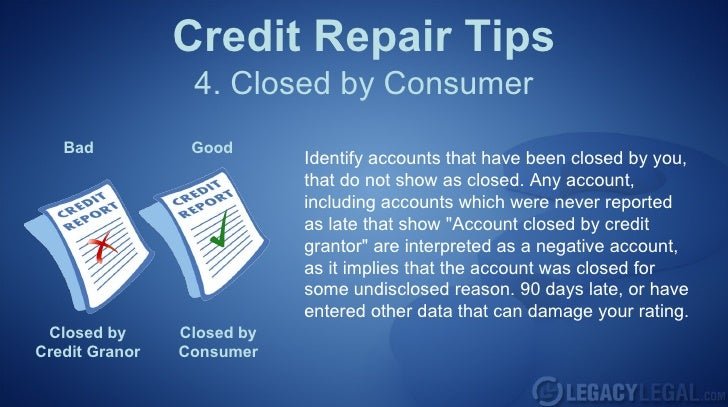Credit Repair Strategies: A Comprehensive Guide to Rebuilding Your Credit
Introduction
Having a good credit score is essential for financial stability and success. It affects your ability to secure loans, obtain favorable interest rates, and even find housing or employment. However, sometimes life throws unexpected challenges our way, resulting in damaged credit. The good news is that there are various credit repair strategies you can implement to rebuild your credit and improve your financial standing. In this comprehensive guide, we will explore these strategies in detail.
Understanding Credit Scores
Before delving into the strategies for repairing your credit, it’s important to understand how credit scores work and what factors impact them.
A credit score is a numerical representation of an individual’s creditworthiness based on their past borrowing behavior. FICO® scores are the most widely used scoring model in the United States, ranging from 300 to 850. The higher the score, the better your chances of obtaining favorable terms for loans or other financial products.
Several key factors influence your credit score:
1. Payment history (35%): This factor assesses whether you have paid bills on time and accounts for the largest portion of your score.
2. Amounts owed (30%): This includes both overall debt levels as well as utilization ratios – the percentage of available revolving credit being utilized.
3. Length of credit history (15%): Longer histories tend to reflect more positively on an individual’s ability to manage their finances responsibly.
4. New credit applications (10%): Frequent new inquiries may indicate financial instability.
5. Types of credit used (10%): A diverse mix of different types of accounts can positively impact your score.
Now let us explore some effective strategies you can employ to repair your damaged credit.
1. Review Your Credit Reports
Start by obtaining copies of your current reports from all three major reporting agencies – Equifax, Experian, and TransUnion – through annualcreditreport.com. Review these reports carefully for any errors, such as incorrect personal information, inaccurate account details, or fraudulent accounts. Dispute any discrepancies you find with the credit bureaus to have them corrected or removed from your report.
2. Pay Your Bills on Time
One of the most critical steps in repairing your credit is establishing a consistent pattern of on-time payments. Late payments can significantly damage your credit score and remain on your report for up to seven years. Set up payment reminders, automate bill payments when possible, and create a budget that ensures you can meet all financial obligations promptly.
3. Reduce Your Debt
High levels of debt and high utilization ratios negatively impact your credit score. Develop a plan to pay down existing debts systematically, starting with those carrying the highest interest rates or balances first. Consider strategies such as debt consolidation or balance transfers to make repayment more manageable.
4. Negotiate with Creditors
If you are struggling to repay certain debts due to financial hardship, consider reaching out to your creditors directly. Explain your circumstances honestly and negotiate new payment plans or settlements that are more affordable for you while still satisfying the creditor’s requirements.
5. Build Positive Credit History
While it may seem counterintuitive if you already have negative marks on your credit history, building positive credit is crucial for repairing damaged credit over time:
a) Secured Credit Cards: Obtain a secured credit card by making an initial deposit that serves as collateral against the limit granted by the issuer.
b) Authorized User: Ask someone with good credit – like a family member or close friend – if they would be willing to add you as an authorized user on one of their existing accounts.
c) Credit Builder Loans: These loans are specifically designed for individuals looking to rebuild their credit history and establish positive payment patterns.
d) Rent Reporting Services: Enroll in rent reporting services that include rental payment history on your credit report, which can improve your score if you have a good rental payment history.
6. Avoid New Credit Applications
Frequent applications for new credit can raise red flags to potential lenders and negatively impact your credit score. Only apply for new credit when necessary and do thorough research beforehand to ensure you meet the requirements.
7. Monitor Your Credit Regularly
Stay vigilant about monitoring your credit reports and scores regularly. Consider using free services like Credit Karma or other reputable platforms that provide updates on changes to your credit profile. This allows you to identify any errors or signs of identity theft promptly.
Conclusion
Repairing damaged credit takes time, patience, and commitment. By reviewing your reports, making timely payments, reducing debt, negotiating with creditors, building positive credit history, avoiding unnecessary applications, and monitoring your progress closely – you can successfully rebuild your financial standing over time. Remember that each individual’s situation is unique; therefore, it’s essential to tailor these strategies according to your specific needs and seek professional advice if necessary. With perseverance and proper planning, you can regain control of your creditworthiness and pave the way towards a more secure financial future.

